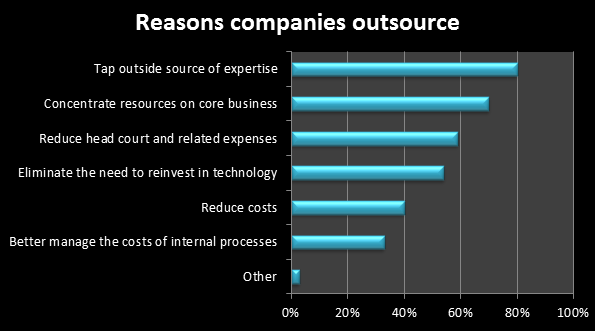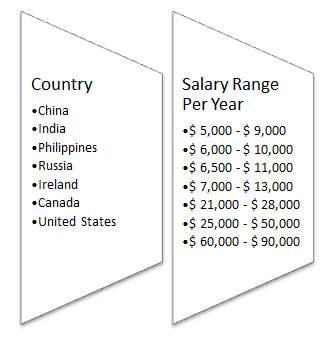Outsourcing Project



- Insourcing (in-house-development) – A common approach using the professional expertise within an organization to develop and maintain the organization’s information technology systems
- Outsourcing – An arrangement by which one organization provides a service or services for another organization that chooses not to perform them in-house

- Onshore outsourcing – engaging another company within the same country for services
- Near shore outsourcing – contracting an outsourcing arrangement with a company in a nearby country
- Offshore outsourcing – using organizations from developing countries to write code and develop systems
- Big selling point for offshore outsourcing “inexpensive good work”

- Factors driving outsourcing growth include;
- Core competencies
- Financial savings
- Rapid growth
- Industry changes
- The Internet
- Globalization
- According to PricewaterhouseCoopers “Businesses that outsource are growing faster, larger and more profitable than those that do not”
- Most organizations outsource their noncore business functions, such as payroll and IT

Outsourcing Benefits
Outsourcing benefits include;
- Increased quality and efficiency
- Reduced operating expenses
- Outsourcing non-core processes
- Reduced exposure to risk
- Economies of scale, expertise and best practices
- Access to advanced technologies
- Increased flexibility
- Avoid costly outlay of capital funds
- Reduced headcount and associated overhead expense
- Reduced time to market for products or services
Outsourcing challenges
Outsourcing challenges include;
- Contract length
- Difficulties in getting out of a contract
- Problems in foreseeing future needs
- Problems in reforming an internal IT department after the contract is finished
- Competitive edge
- Confidentiality
- Scope definition


Comments
Post a Comment